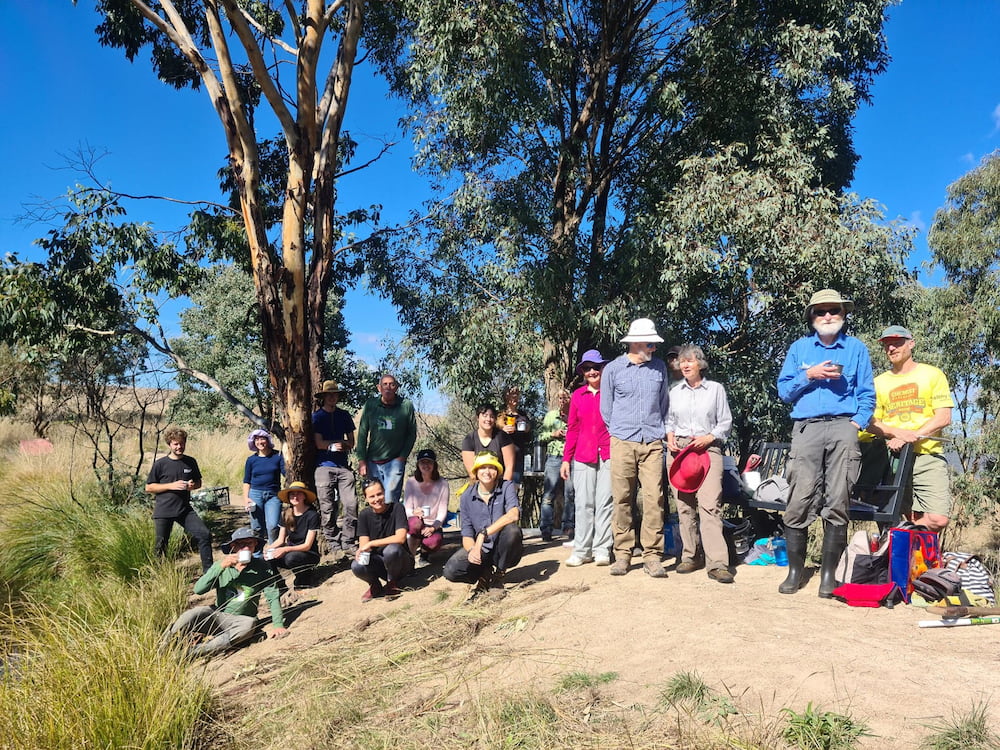Lockdown has brought many Canberrans closer to nature in their suburbs – and government funding for local environmental groups will ensure the bush city remains green for years to come.
Environmental volunteer groups will receive $3.5 million from the ACT Government over the next four years to help them maintain and improve Canberra’s iconic landscape, Environment Minister Rebecca Vassarotti revealed ahead of the 2021-22 Budget being handed down on 6 October.
The Southern ACT and Ginninderra Catchment Groups and the Molonglo Conservation Group will share in $1.68 million over the next four years. The Ginninderra Catchment Group’s citizen science program, FrogWatch, will receive another $360,000. Also, ACT Wildlife will receive $427,000 to rescue, rehabilitate, and release native animals, while a ParkCare ranger will be appointed in the north.
These groups had provided localised and dedicated care for the environment for decades, Ms Vassarotti said; reliable long-term funding would help them continue their valuable work.
Grateful for the funding, Southern ACT Catchment Group (SACTCG) executive officer Martine Franco said it would guarantee more developed projects, and longer-term planning and relationships with its member groups: small park care and land care groups, and rural landholders.
“Secure funding like this means that we can work with the community in ongoing ways, so that we can connect people to nature and respond to community needs,” Ms Franco said.
“I see our relationship with the community being strengthened, and our abilities to support community action to improve the local environment growing.”
SACTCG represents all active environmental groups in the southern ACT, covering Woden, Weston Creek, Tuggeranong, and Tharwa.
“Canberrans are fantastic people; they like the natural environment,” Ms Franco said. “Often the reason they say they live here is because they love being surrounded by the hills and the bush.
“During lockdown, more people have started connecting with nature, because they can’t go to the gyms anymore. So many more people are out in the reserves, discovering this beautiful bush city that we live in. Over the next four years, we hope that interest is maintained.”
The funding would provide SACTCG members with the skills and knowledge to manage natural resources in their area – such as local waterways.
Holder Wetlands and Isabella Ponds, for instance, are part of the Healthy Waterways program to improve the quality of water going into the Murrumbidgee River. They are also popular recreation areas for nearby residents.
SACTCG has set up stewardship groups to tend to the wetlands; every month, locals monitor for pollution, weed riverbanks, and educate the public about how they can help keep the water clean.
Funding will maintain support for the stewardship groups, help them improve community engagement, and keep them going to come up with new project ideas, Ms Franco said.
SACTCG are developing bird- and bee-friendly gardens, and introducing new native grasses instead of exotic species – increasing native habitat for native animals in the suburbs.
“[Locals] like to walk their dogs and take their children out to play in those areas,” Ms Franco said. “But if they learn about native environments, and want to naturalise those areas more, that’s even better.”
The funding will give SACTCG the capacity to write more grants. The Catchment Group was like a community hub for the natural environment and community, Ms Franco explained; she writes at least 10 grants a year.
Nature lovers ring her or pop into her office, and say: “What do you think about an Indigenous foods walk up Mount Taylor?” “Great idea!” she replies, “let’s put in a grant application.”
SACTCG only has 3.6 staff, Ms Franco said, but she delivered 22 projects in the last year. “That’s because we leverage support and interest from the community – and long-term funding gives us the ability to continue those relationships with the community.”
Ms Franco looked forward to working with the ACT Government to support community action to improve the local environment.
Anyone who wants to join a Landcare group can contact their local catchment group: Southern ACT Catchment Group, Ginninderra Catchment Group, or Molonglo Conservation Group.
Urban groups had grown exponentially in recent years, and there was always room for more groups to care for local urban parks and reserve lands, Ms Franco said. Anybody interested in starting up a group can contact their local catchment group.
“We will support them to get a group going. We will give them the tools; we will link them up with the government agencies that manage that piece of land; and we will give them as much information and support as they need to get a group going.”



